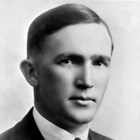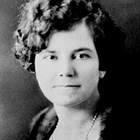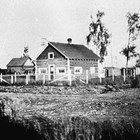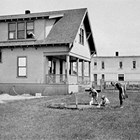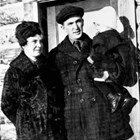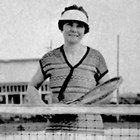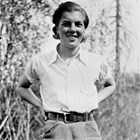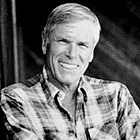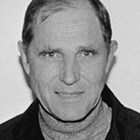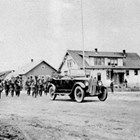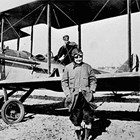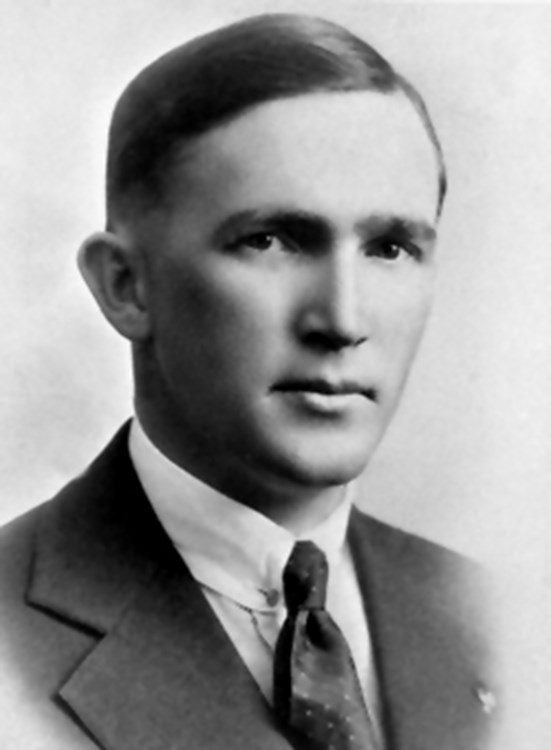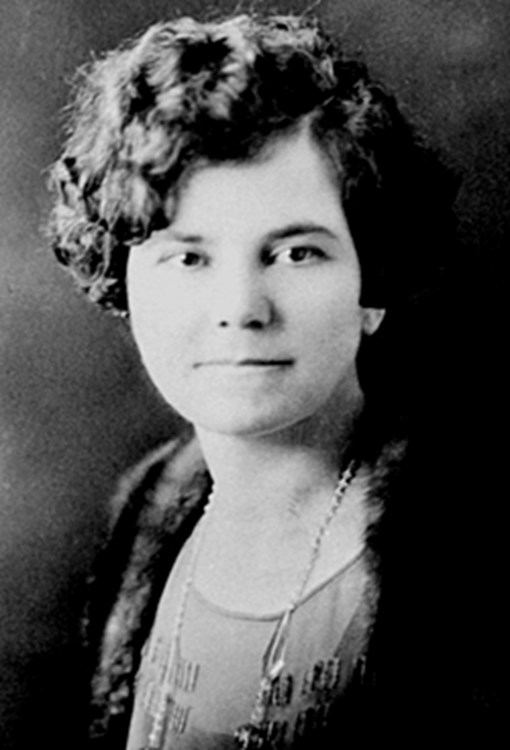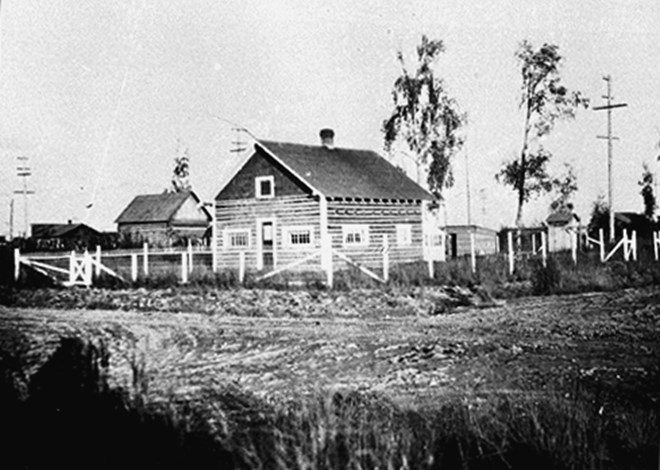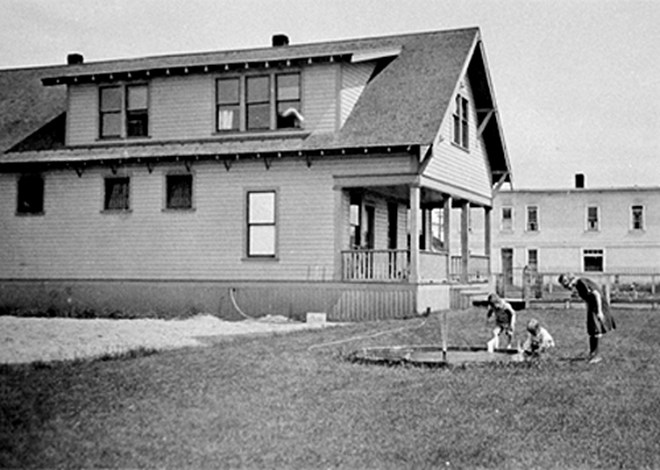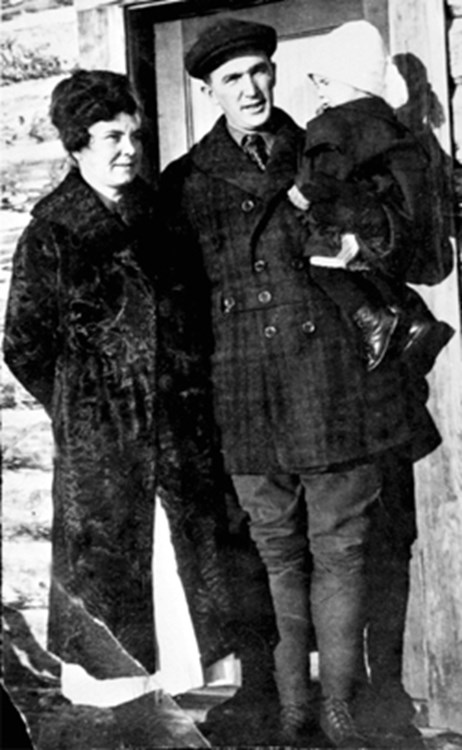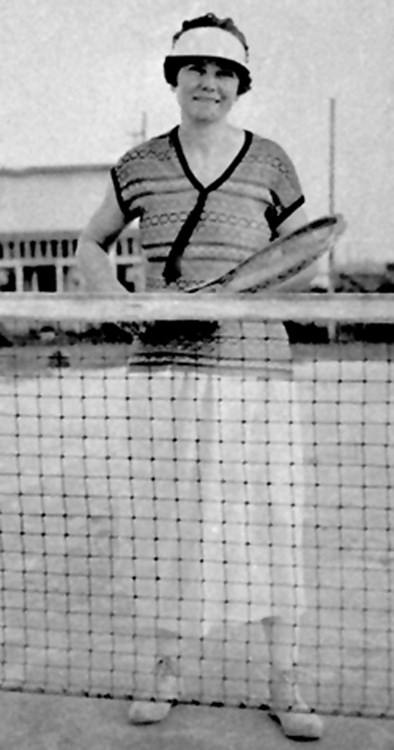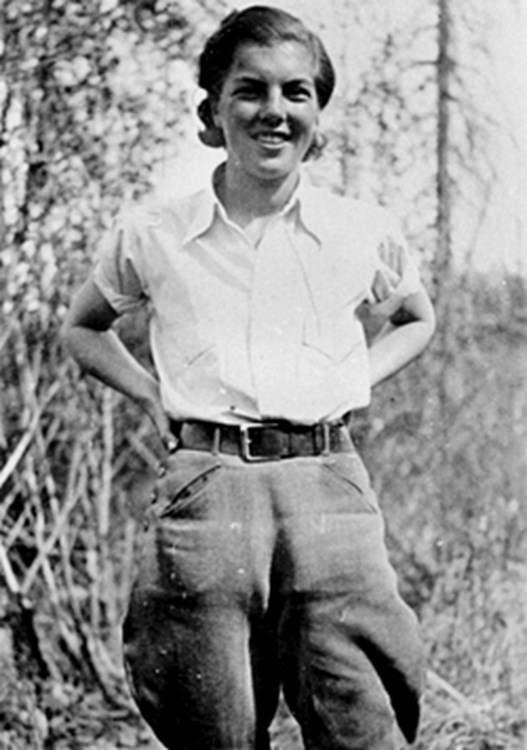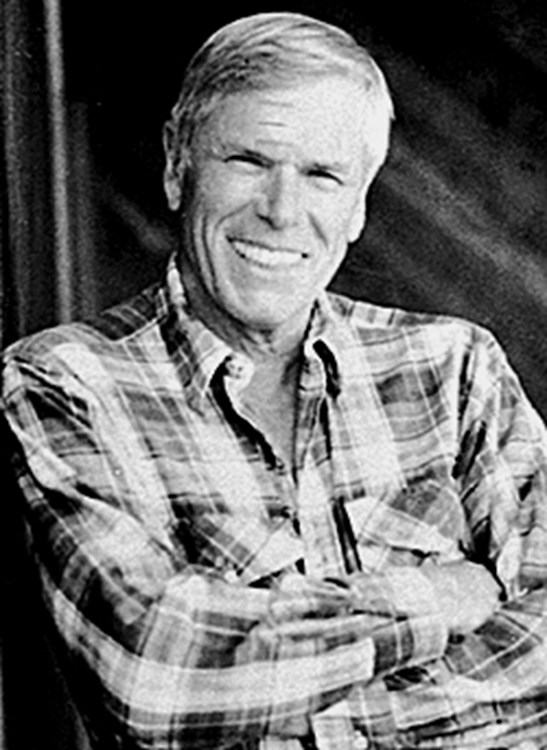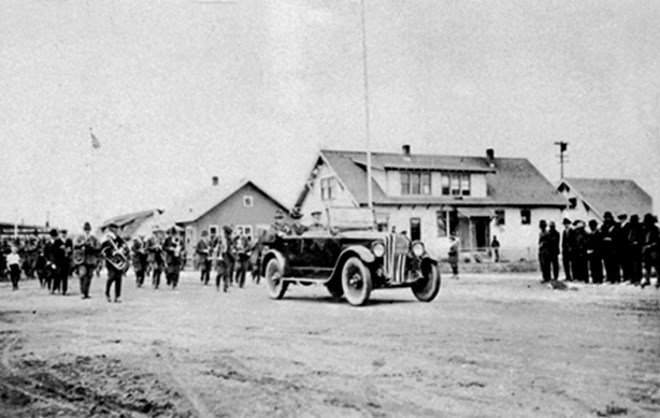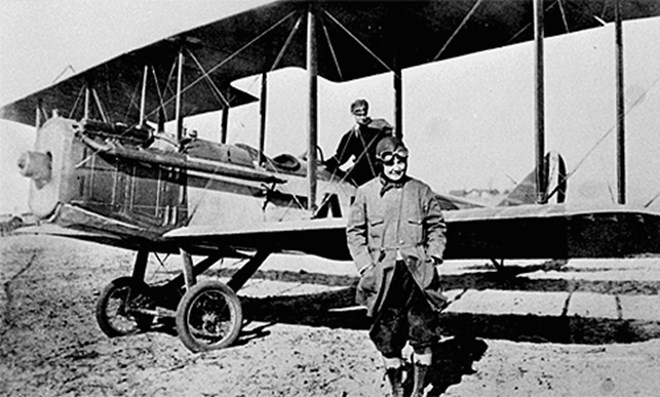Staser, Harry I.
1891-1940 | Miner, Prospector, and Deputy U.S. Marshal
Harry Ingle Staser was born in Newburg, Indiana on January 17, 1891, the son of Frank Staser and Anna Ingle Staser. He was educated in the public schools at Newburg and was a cadet at Culver Military Academy, Culver, Indiana, for two years.
As a young man still in his teens, Staser was determined to reach the gold fields of the Klondike. Harry entered Canada via Haines, Alaska on his way to Dawson in 1909. After his arrival in Dawson City, Yukon, he met a man named Stevenson, and together they took a freighting contract to deliver supplies via dog team to the Northwest Mounted Police station on Herschel Island. He was back in Haines by April 30, 1910.[1]
In 1910, Staser returned to Indiana, and remained there for two years before making a second Alaska trip in 1913-1914. He returned to Alaska via Valdez, and hiked the Valdez trail to Fairbanks, which provided the first overland access to interior Alaska. Shortly after arriving in Fairbanks over the trail with $2 in his pocket, which he spent at a public dance, he first met Barbara Francetta De Pencier.[2]
Barbara Francetta De Pencier was born at Dusty, Washington, near Colfax, on April 1, 1889. Her mother, Jenny Kitchens De Pencier, was from Nova Scotia, and her father, Daniel De Pencier, came from Ontario. After her parents separated, Barbara and her mother headed to Skagway to join the Klondike gold rush. Barbara may have arrived in Dawson as early as 1903, as she was employed as a stenographer by Pattullo & Ridley, on King Street in Dawson. In 1905, she worked in the same capacity for Smith and MacRae, on Harper and 9th.[3] During her stay in Dawson, Barbara and her mother, Jane, opened a small ladies' ready-to-wear shop. The big rush was petering out in Dawson, so they both moved downriver to Fairbanks in 1908. Barbara worked as a stenographer for E.H. Mack, on 7th Avenue, in Fairbanks, between 1909-1910.[4] While in Fairbanks, she married a riverboat captain named Green, and they moved to Iditarod during the 1910 gold rush. In Fairbanks, a daughter, Jean, was born on May 15, 1912. Shortly thereafter she and Green returned to Fairbanks, and the marriage was annulled, based on her age (seventeen) when she married.[5]
When the Iditarod gold rush began in 1910, Staser joined that stampede and maintained a store there. In 1915, he went to Fairbanks and worked as a meat hunter for crews building the Alaska Railroad as meat had to be caught locally as no refrigeration existed at that time. He again met Barbara Francetta De Pencier, and they were eventually married in Reno, Nevada in 1916.
During World War I, Staser enlisted in the U.S. Army and was stationed at Camp Lewis, Washington. He was a first sergeant in Company A, 37th Machine Gun Battalion, 13th Infantry. In answer to a levy of troops to be shipped to France, he was skipped after everyone was lined up and every other man sent. He was a member of the U.S. Army from June 27 to December 20, 1918.[6] After his military service, he studied mining and became a self-taught mining engineer.
In 1919, the Stasers moved to Anchorage. He built a log cabin at the corner of 7th Avenue and D Street to accommodate his family, now including two sons, Bruce (born, October 27, 1919, in Anchorage), and Beverly "George" (born February 4, 1922).
Staser’s activities were diverse and numerous. In 1919, he was initially hired as a pump man for the Alaska Railroad, and then became superintendent of the material yard in Anchorage. He signed on as a hard rock miner at Martin's Mine, adjacent to the Independence Mine in the Willow Creek mining district. In November 1922, he was elected on the Republican ticket to serve as a representative for the Third Division in the sixth territorial legislature, from March 5 to May 3, 1923. He initiated legislation to create a mining development board; repeal a tax measure; and require written evidence of the sale and delivery of gold, silver, and other rare minerals.[7] He was appointed as Deputy U.S. Marshal for Anchorage, serving exactly ten years from July 1, 1923 to July 1, 1933. In 1926, he bought the Monarch Gold Mine, in the upper Crow Creek Valley, adjacent to Girdwood, which he worked until 1940.[8]
Staser was a member of the Anchorage Elks Club, American Legion, and was a life member of the Anchorage Lodge of Masons. He was also a Shriner, being a member of the Nile Temple at Seattle, Washington.[9]
Barbara Staser was the Alaska territorial women’s singles and doubles tennis champion in 1925, a skill that her son, Bruce, inherited, as noted in his obituary “much to the chagrin of his tennis opponents.”[10]
Harry I. Staser died on February 8, 1940, after suffering a heart attack as a result of a hard climb to his mine. In addition to his widow, Barbara, he was survived by a daughter, Jean Staser Redman, and two sons, Bruce and Beverly "George." He is buried in the Masonic Tract, Anchorage Memorial Park Cemetery, Anchorage.[11]
On Memorial Day, 1935, Barbara Staser and sons Bruce and Beverly were involved in a serious auto accident near Winslow, Arizona, which left Barbara paralyzed from the chest down for the rest of her life. Barbara Francetta De Pencier Staser died on October 13, 1952, in Los Angeles, California. Barbara is buried at Forest Lawn Memorial Park in Glendale, Los Angeles County, California.[12]
After their son, Bruce, retired from the U.S. Army in 1973, he became Adjutant General of the Alaska National Guard with the rank of major general on May 1, 1973. He left this position in 1974 to become Executive Assistant to Mayor George Sullivan of Anchorage. He served as the Director of Civil Defense for the Anchorage area from 1978 to 1982.[13]
The Harry I. Staser Family Papers, 1891-1977 (HMC-0233), are located in Archives and Special Collections, Consortium Library, University of Alaska Anchorage, Anchorage, AK. In addition, the Bruce I. Staser Family Papers, 1937-1983 (HMC-0232), are also located there. Both collections are open to the public and available for research.
Endnotes
[1] Bruce I. Staser, Cold War Soldier: A History of Early Alaska and Early Anchorage (Ponte Vedra, FL: Bruce I. Staser, 600 Ponte Vedra Boulevard, No. 207, Ponte Vedra, FL 32082, 2005), 19-20.
[2] Ibid.
[3] Entry for Barbara De Pencier, in David A. Hales, Margaret N. Heath, and Gretchen L. Lake, An Index to Dawson City, Yukon Territory and Alaska Directory and Gazetteer, Alaska-Yukon Directory and Gazetteer, and Polk’s Alaska-Yukon Directory and Business Directory, 1901-1912, Volume II, D-G (Fairbanks: Alaska and Polar Regions Department, Elmer E. Rasmuson Library, University of Alaska Fairbanks, 1995), 38), https://scholarworks.alaska.edu/handle/11122/2730 (accessed September 26, 2016).
[5] Bruce I. Staser, Cold War Soldier: A History of Early Alaska and Early Anchorage, 41-42 ; and John P. Bagoy, Legends & Legacies, Anchorage, 1910-1935 (Anchorage: Publications Consultants, 2001), 164-165.
[6] Bruce I. Staser, Cold War Soldier: A History of Early Alaska and Early Anchorage, 48-50; and Ed Ferrell, compiler and editor, Biographies of Alaska-Yukon Pioneers, 1850-1950, Volume 3 (Bowie, MD: Heritage Books, Inc., 1997), 277. See also, John P. Bagoy, Legends & Legacies, Anchorage, 1910-1935, 164-165.
[7] Alaska, House of Representatives, Journal of the House of Representatives of the Territory of Alaska, Sixth Session, Begun and Held in Juneau, The Territorial Capital, March 6, 1923; Adjourned Sine Die, May 3, 1923 (Juneau: Juneau Sunday Capital, 1923): 358, 361, and 364; and Alaska Legislative Celebration Commission, Alaska State Legislature: Roster of Members, 1913-2013, Centennial Edition (Juneau: Legislative Affairs Agency, 2013): 23-26, http://w3.legis.state.ak.us/docs/pdf/ROM-centennial.pdf (accessed September 23, 2016).
[8] Bruce I. Staser, Cold War Soldier: A History of Early Alaska and Early Anchorage, 77-78; “Harry Staser Dies While Climbing Trail,” Anchorage Daily Times, February 8, 1940, 1; John P. Bagoy, Legends & Legacies, Anchorage, 1910-1935, 164-165; and biographical sketch, Harry I. Staser, in Harry I. Staser Family Papers, 1891-1977 (HMC-0233), Archives and Special Collections, Consortium Library, University of Alaska Anchorage, Anchorage, AK.
[9] “Masonic Lodge to Hold Rites for Mr. Staser,” Anchorage Daily Times, February 12, 1940, 5; and Ed Ferrell, compiler and editor, Biographies of Alaska-Yukon Pioneers, 1850-1950, Volume 3, 277.
[10] Obituary, General Bruce I. (“Rock”) Staser, U.S., Find a Grave Index, 1600s-Current [database on-line], http://ancestry.com (accessed September 26, 2016).
[11] “Harry Staser Dies While Climbing Trail,” Anchorage Daily Times, February 8, 1940, 1; and Harry I. Staser, Alaska, Find a Grave Index, 1841-2012 [database on-line], http://ancestry.com (accessed September 26, 2016).
[12] Bruce I. Staser, Cold War Soldier: A History of Early Alaska and Early Anchorage, 84-85; Barbara Francetta De Pencier Staser, California Death Index, 1940-1997 [database on-line], http://ancestry.com (accessed September 26, 2016); and Barbara Francetta De Pencier Staser, California, Find a Grave Index, 1775-2012 [database on-line], http://ancestry.com (accessed September 26, 2016).
[13] Biographical sketch, Bruce I. Staser, Bruce I. Staser Family Papers, 1937-1983 (HMC-0232), Archives and Special Collections, Consortium Library, University of Alaska Anchorage, Anchorage, AK; obituary, General Bruce I. (“Rock”) Staser, U.S., Find a Grave Index, 1600s-Current [database on-line], http://ancestry.com (accessed September 26, 2016). See also, Bruce I. Staser, Cold War Soldier: A History of Early Alaska and Early Anchorage (Ponte Vedra, FL: Bruce I. Staser, 2005); and Sandi McDaniel, "The First Families Project would Pay Tribute to Anchorage's Pioneers," Anchorage Daily News, May 28, 1993, E-1.
Sources
This biographical sketch of Harry I. Staser is based on an essay originally published in John P. Bagoy's Legends & Legacies, Anchorage, 1910-1935 (Anchorage: Publications Consultants, 2001), 164-165. In addition, there is a history of Staser's business and mining career in "The Monarch Mine" section, Michael Carberry and Donna Lane, Patterns of the Past: An Inventory of Anchorage's Historic Resources (Anchorage: Community Planning Department, Municipality of Anchorage, 1986): 158-160. See also the Harry Ingle Staser file, Bagoy Family Pioneer Files (2001.11), Box 7, Atwood Resource Center, Anchorage Museum at Rasmuson Center, Anchorage, AK. Photographs courtesy of the Staser family. Edited by Mina Jacobs, 2012. Edited, revised, and expanded by Bruce Parham, September 26, 2016).
Preferred citation: Bruce Parham, ed., “Staser, Harry I.,” Cook Inlet Historical Society, Legends & Legacies, Anchorage, 1910-1940, http://www.alaskahistory.org.
Major support for Legends & Legacies, Anchorage, 1910-1940, provided by: Anchorage Museum at Rasmuson Center, Atwood Foundation, Cook Inlet Historical Society, and the Rasmuson Foundation. This educational resource is provided by the Cook Inlet Historical Society, a 501 (c) (3) tax-exempt association. Contact us at the Cook Inlet Historical Society, by mail at Cook Inlet Historical Society, Anchorage Museum at Rasmuson Center, 625 C Street, Anchorage, AK 99501 or through the Cook Inlet Historical Society website, www.cookinlethistory.org.
